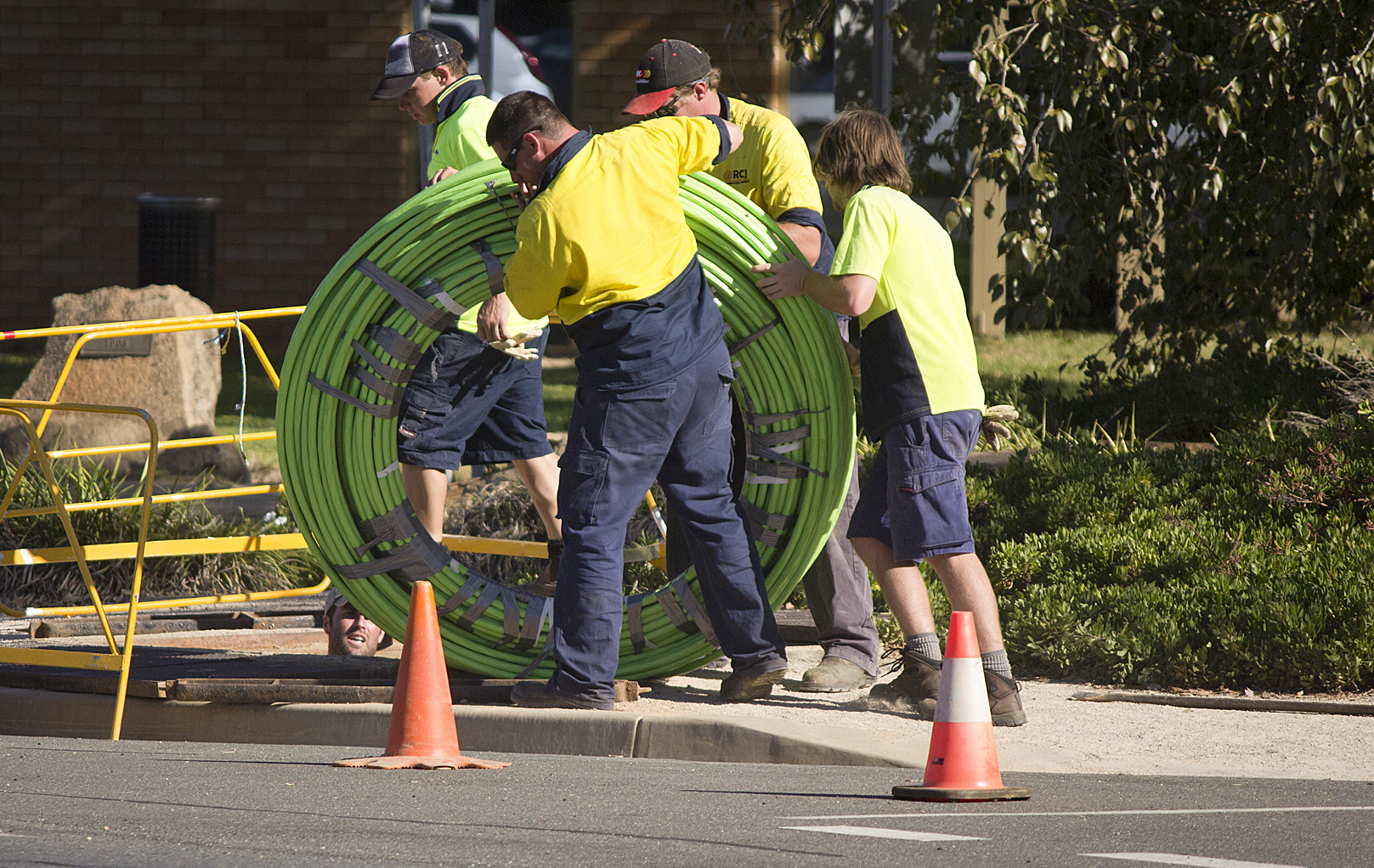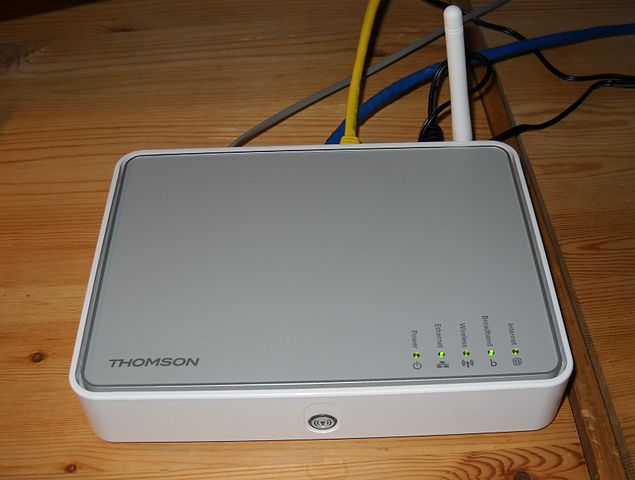Physical network connections - Internet
学习要点
作业
Intro
The Internet is a network of computers connected to each other. But what does each physical connection look like? It depends on the needs of the connection and the size of the network.
Copper cables
Since the landline telephone system originally used copper wires, the first Internet connections reused that technology and many still use it today.
If you’re in a computer lab or near a modem, you can probably find a cable similar to this one:

That’s a CAT5 cable, a type of twisted pair cable that’s designed for use in computer networks.
If you were to look inside the cable, you would find four twisted pairs of copper wires:

Twisted pair cables send data through a network by transmitting pulses of electricity that represent binary data:
To make sure cables are transmitting information in a way that can be understood by the recipient, they follow the Ethernet standards. That’s why twisted pair cables are commonly known as Ethernet cables.
They are used both in networks as small as a company office (a LAN) or as large as an entire country (a WAN).
Fiber-optic cables
A fiber-optic cable contains an optical fiber that can carry light (instead of electricity). The fiber is coated with plastic layers and sheathed in a protective tube to protect it from the environment.

Fiber-optic cables communicate by sending pulses of light that represent binary data:
They typically also follow the Ethernet standards to make sure they’re sending data in a way that can be commonly understood by any recipient in the network.
Fiber-optic cables are capable of transmitting much more data per second than copper cables. They’re often used to connect networks across oceans so that data can travel quickly around the world.

A fiber-optic cable laid on the ocean floor.
As fiber-optic cables become less expensive, they’re becoming increasingly common in city-wide networks as well.

A fiber-optic cable being laid along a street in New South Wales, Australia. Image source: Bidgee, Wikipedia
Wireless
Wireless connections don’t involve any wiring at all—at least at first. A wireless card inside the computer turns binary data into radio waves and transmits them through the air:
Those radio waves can’t travel very far: 75-100 feet in a place like an office building that’s filled with all sorts of obstacles, or up to 1000 feet in a wide open field.
The waves are hopefully picked up by a wireless access point which converts them from radio waves back into binary data. Wireless access points are connected to the rest of the network using physical wiring, like copper or fiber-optic cables.

A wireless router with twisted pair cables.
Wireless connections are limited in how much area they can cover, but they are increasingly commonplace due to the prevalent use of portable computing devices.
All together now
At any given time, our Internet connection might be using a combination of those technologies. Maybe we’re using WiFi to connect to our home router, our home router is using twisted pair copper cables to connect to the metropolitan network, and those cables are hopping over fiber to communicate with overseas data centers.
Each technology has both advantages and disadvantages, so we use whatever is best for the job.
| Type | Sends | Distance | Bandwidth | Issues |
|---|---|---|---|---|
| Wireless | Radio | 100 ft | 1.3 Gbps | Slower in reality |
| Twisted pair copper cables | Electricity | 330 ft | 1 Gbps | Susceptible to interference |
| Fiber-optic cable | Light | 50 miles | 26 Tbps | Expensive |
The data in that table is current as of early 2020. Engineers are constantly discovering new ways to improve network connections, especially when it comes to increasing the bandwidth. We’ll learn more about bandwidth in the next article on bit rate, bandwidth, and latency.
本页面采用知识共享署名-非商业性使用-相同方式共享 4.0 国际许可协议进行许可。
致谢:Khan Academy - AP® Computer Science Principles


